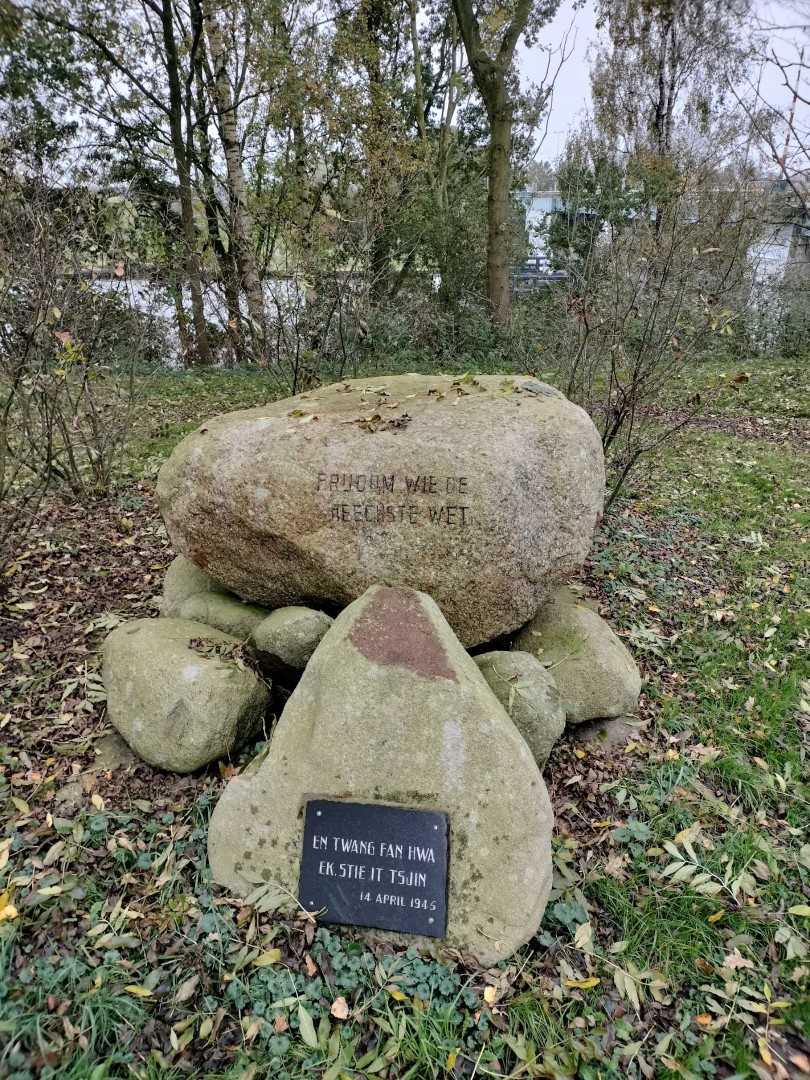On 14 April 1945, members of the BS successfully seized and held the bridge across the Knillesdjip / Kolonelsdiep (now the Prinses Margriet Canal). This canal formed a significant obstacle for the advancing Canadian troops. That same day, the Royal Canadian Dragoons set out from Oosterwolde, moving northward with the aim of reaching the Wadden Sea above Dokkum.
The Canadians were accompanied by Frisian resistance fighters, including sabotage leader Piet Oberman. Oberman and his group provided the Canadians with valuable intelligence along the route. The day before, he had personally planned the route together with the Canadian commander. Oberman understood the strategic importance of securing a bridge over the canal intact. He therefore ordered the BS to occupy one or more bridges so that the Canadians could use them for their advance. Plans for this operation were already in place — but due to unforeseen circumstances, the BS came to believe that the bridge at Kootstertille had been rigged with explosives. As a result, they decided instead to occupy the bridge at Blauwverlaat.
The action began around 1:30 p.m. The German guards on duty at the bridge were swiftly overpowered without bloodshed. A few hours later, however, three German vessels approached. Sensing danger, the German crews went ashore, and a firefight broke out. The Germans attempted to deploy the light anti-aircraft guns from their ships, but were quickly forced to abandon their efforts.
Dozens of resistance fighters fought back fiercely with machine guns and even a bazooka (anti-tank rocket launcher), eventually driving the Germans off. The enemy fled to nearby farms and tried to continue fighting from there, but by nightfall, the area finally fell quiet.
In the end, the Royal Canadian Dragoons did not use the Blauwverlaat bridge on 14 April. They crossed the canal at Kootstertille instead — that bridge, contrary to earlier intelligence, turned out not to have been mined. Although the Blauwverlaat action did not directly aid the Canadian advance, it remains a powerful example of the determination of the Frisian resistance, who risked everything to hasten the liberation. Around seventy resistance fighters took part, engaging the occupiers in intense combat for many hours.
The occupation of the bridge is still regarded as a heroic act of resistance and a symbolic moment in the struggle for freedom.
The monument, unveiled on 15 April 1955, consists of a large glacial boulder with two inscriptions in Frisian:
“FRIJDOM WIE DE HEECHSTE WET”
(Freedom was the highest law)
“EN TWANG FAN HWA EK, STIE IT TSJIN 14 APRIL 1945”
(And whoever imposed tyranny, it was resisted — 14 April 1945)
The monument was designed by H.F. de Boer.
